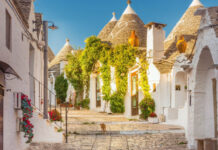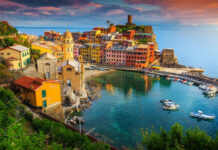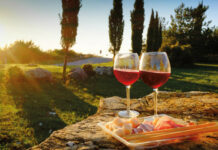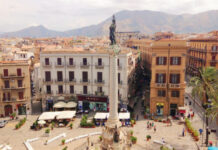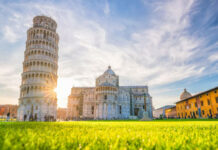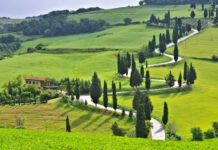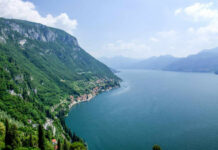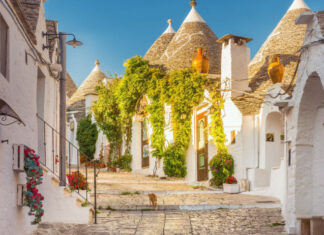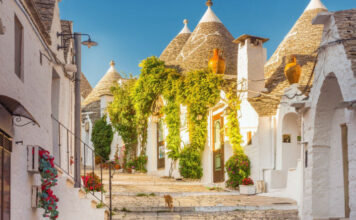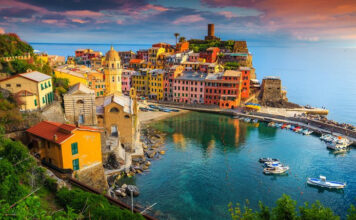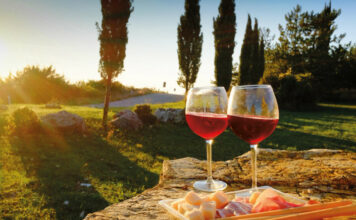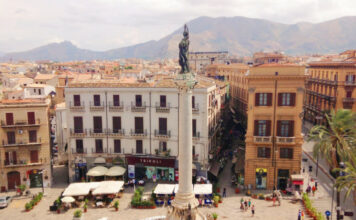No other country does not do hilly cities like Italy. Drive red poppies, rows of olive trees and previous fields of green grape gardens, and suddenly you find yourself in a medieval village of Golden Stone, which is high like eagle nests, takes away your breath.

Small towns and villages of Italy are full of romance, from snow -covered peaks to the north -covered blue seas. Pictures are enjoying themselves fresh Truffal pasta in a sunny square, while an old bell exits the tune tune, walks through a grand rebellion piaza on one evening, or floats in the sea before drinking a sunset epervico, which has been standing for centuries. We have discovered Italy to the tip of our thin “heels to find the most attractive cities and villages from the top of its beautiful” boot ” – those places that impress with their beauty and win you with their warm feeling.
Neive, Piedmont
Best for wine tasting and vineyard strolls
Do the medieval stone walls shine like the evening sun? Yes. A hill setting with such peaceful ideas can you start checking the prices of the local house? Yes. The slopes are rolled with vineyard barriers that make some great wines in this region? Absolutely.
In Pidmont, the neve cannot be packed with large tourist attractions, but it attracts visitors with its classic Italian beauty and warm atmosphere. No wonder it is listed between the most beautiful small towns of Borghi Pie Belli of Italy. Life slowly goes on here, in the best possible way. You can deviate from narrow old roads, relax in sunny sections, and walk between vineyard barriers. Neive is famous for four special wine – Dolcato D’Alba, Barbarsesko, Moskato and Barbara D’Alba.
A wine bar hidden inside the walls of the medieval palace, try them during a basement tour at La Cassetha del Castello, or enjoy an outdoor drink in Al Nido Dela Sinellagra. Travel tip: Wine tasting is best by a good lunch. Go to a traditional ostaria, such as Borgo Vatchi, where every dish is made with care – fresh pasta and ministry dela nona (grandmother’s botanical soup) to Torta de Nocol (hazelnut cake).
Spello, Umbria
Best for picture-book medieval looks
Situated on the soft slopes of the green hills of Umbria, Spallo is a village that catches your heart at first sight. Its warm, honey colored stone shines in sunlight, and every corner looks like a scene from a painting. Tuscany can receive the most attention, but finding a more attractive Italian village than Spello would be a real challenge.
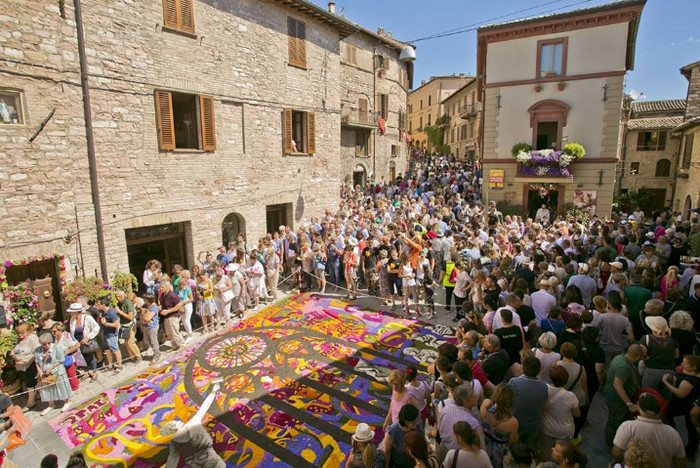
Surrounded by ancient Roman walls and towers, Old Town Cobalstone is a cycle of bursting with beautiful gothic churches and flowers with narrow roads. For such a small space, Spello holds some notable treasures. Inside the church of saints, you can admire beautiful Renaissance graffiti, including famous painter Pinturichio.
The hurch of Santa Maria Magier also hidden amazing outstanding works. In Villa Dei Moji, at a short distance, you can see surprisingly protected Roman Mosaic that tells stories for centuries. Nevertheless, the real magic of spello lies in its slow, relaxed speed.
Spend one afternoon in tractoria operated by a family, tasting local olive oil, fixing meat, and black truffle. Entca Porterzio enjoy a glass of regional liquor, or avoid agroismo Il Bastione, set between peaceful olive trees, for unforgettable scenes and homemade food directly from the garden.
Atrani, Campania
Best for low-key Amalfi style
If you blink the eyelid, you can remember Atrani – officially the smallest village in Italy, only 0.12 square kilometers. And it would be a real shame. Tuck along the glamorous and stunning amalfi coast, it is like a UNESCO World Heritage Treasure to step into a small medieval fairy tale. Behind this, high mountains arise in the sky, while the front, the tirinian sea spreads in dark sapphire blue.
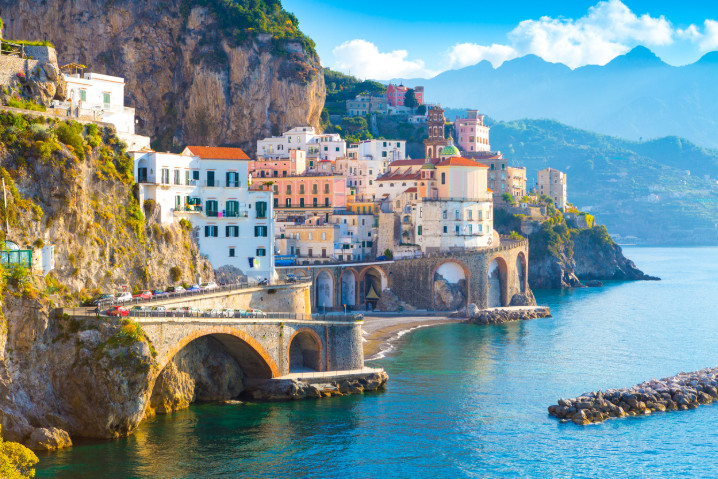
Old Town Whitewash is a cycle of roads, arches, courtyards, pastel-colored houses and endless small stairs. At night, the brightness of the fishermen is twinkle across the water. Romantic? Absolutely. But you don’t have all this for yourself – especially since Atrani appeared in the Netflix series replays with Andrew Scott, which had brought more visitors than ever before. Nevertheless, if you come in the quiet months of spring or autumn, you can enjoy its attraction without the crowd.
Travel Tip: Atrani is a peaceful basis for the discovery of Amalfi coast. Amalfi is only 10 minutes to roam around the headland, with its sunny sections, beaches and grand newly-mishra cathedrals. Rawello, famous for its gardens and scenes, is away the drive at just 10 minutes away.
Sperlonga, Lazio
Best for dreamy sea views
Late in the afternoon, the sun heats the white -white walls of Sparelonga, where the bogenvilia spreads to the ripping of pink and purple. The long shade is spread over narrow streets and steep steps, and the city feels like a set of an old film. Located on a rocky headland above a golden curve of sand, Sparelonga is breathtaking under the Firoza Tyrrahinian Sea. Somehow, it has been under the radar, untouched by the huge crowd of other Italian coastal cities. This is the kind of place you want to keep almost secret.
Wander through medieval roads, and stop for a coffee in small, attractive Piaza dela Liberta. Then Villa de Tiberio visit the Archaeological Museum of Sports, where you can see ancient sculptures and detect the remains of the seaside villas of Emperor Tiberius built around a natural grote.
Back to the city, treat yourself for dinner on the ultra, where the taste of clam, muscles, and shrimp is as if they came directly by boat that morning. Travel tip: Sparlonga sits on half the way between Rome and Naples-the correct is perfect for the city break with the comfort of each two hours of drive for a few days.
Cefalu, Sicily
Best for Arab-Norman architecture
If there is a city that may immediately fall in love with Italy, it is a beautiful safalo, sitting on the northern coast of Sicily, where there are waves of Tirenian sea accident against the edge. La Rokoca rises over the city, a huge rock crowned with the ruins of a Arab-Norman Mahal, called Il Castello. Cephalo will steal your heart with its golden stone houses, narrow cobbled roads, medieval classes and a cathedral, decorated with the Bijantin Mosaai. And then the beach is – a long stretch of golden sand that meets sparkling blue sea.
At sunrise or sunset, here the light looks magical, almost like a dream. It is no surprise that director Giuseppe Tornatore chose Cefal as a filming place for his 1988 film cinema Paradiso. For the best ideas, climb to the 17th -century Bastyone de Capo Rum Marchiafwa or follow the Salva Sarakeni path standing beyond the city walls on top of La Rokoca. Travel Tip: Cephalo’s attraction is not a secret, and in summer it can be very busy and expensive. For a cool journey and better prices, plan your journey in spring or early autumn.
Alberobello, Puglia
Best for fairytale trulli
Nothing holds the spirit of paglia better than whitewashing. Vaala d’-triyas surrounded by small stone-shaped roofs with shaped roofs grow from hot, sunshine fields. These unique dry-stone huts prefer something from almost a story. The best place to see them is in Albobelo, a UNESCO World Heritage Site at the top of Italy’s heel.
This attractive small town is the house of hundreds of these 15th century, behaive -shaped houses, built of local limestone, which are spread in two hills: Rion Monty and Rione AIA Piccola. Alberobelo is a picture-perfect and loves equally by photographers and Instagram fans. But in summer, the crowd may be heavy, and many trawls are now souvenir shops. For a calm and more authentic experience, it is better to travel in spring or autumn. Living overnight is a great idea – when visitors are left, the city becomes peaceful and magical. The local company Trullidea provides comfortable self-kanpan trully and bed-and-brachfast right right at the historical center.
Pienza, Tuscany
Best for Renaissance flair
In Tuscany, you can visit a beautiful medieval hill cities one after the other, such as a necklace on a necklace, rowed hills with pearls, red poppies’ fields and long plants. Many cities are famous here, but one of the most attractive Penja, which is in UNESCO-list Val D’Arsia. The region is known for its soft chalk hills and small peaks which are at the top with old stronghold villages.
In 1459, Pope Pius II decided to convert its small hometown into an ideal renaissance city. Remandable, it still looks almost identical after more than five centuries. Walk through Pienza and you will soon find yourself in front of Doomo, which is a striking church made of pel travertine marble. It stands proudly over a beautiful Renaissance square Drinking Drinking II which is the heart of the city.
Just a short set de Vino is a comfortable and traditional osteoria where you can try local dishes like Zuppa Di Pane E Fagioli – a comfortable soup made with bread and white beans. There are only a few tables, so booking in advance is a good idea. Travel Tip: Pienza is the most busy on weekend, especially in summer. If you want to enjoy its peaceful atmosphere, try traveling during the week.
Bellagio, Lake Como
Best for lakeside dolce vita
On the bright blue beaches of the Como Lake, surrounded by long mountains, Belajio looks like a dream. This attractive small city often leaves visitors for the first time. Its narrow cobbled roads pass on pastel houses with air, terracotta roof, wood shutter and balconies filled with flowers. Saru trees are on the way, and every now and then you hold a glimpse of the Sparkling lake below. It looks like a setting for an ideal Italian love story.
After searching for Old Town and looking at the Romankue Church, take time out to wander from the beautiful gardens of Villa Melji. In the spring, the grounds are filled with colored azless and rhododendron. You can also visit the elegant Villa Sebeloni, praising yourself by Queen Victoria with your roofs and peaceful gardens.
End your day with a sunset boat ride around the headland – an unforgettable and romantic experience. Travel Tip: Belagio is famous, and in the busy summer months it can be very crowded with tourists. For a cool journey, try to come in spring or autumn, or choose a week’s day instead of weekends.
